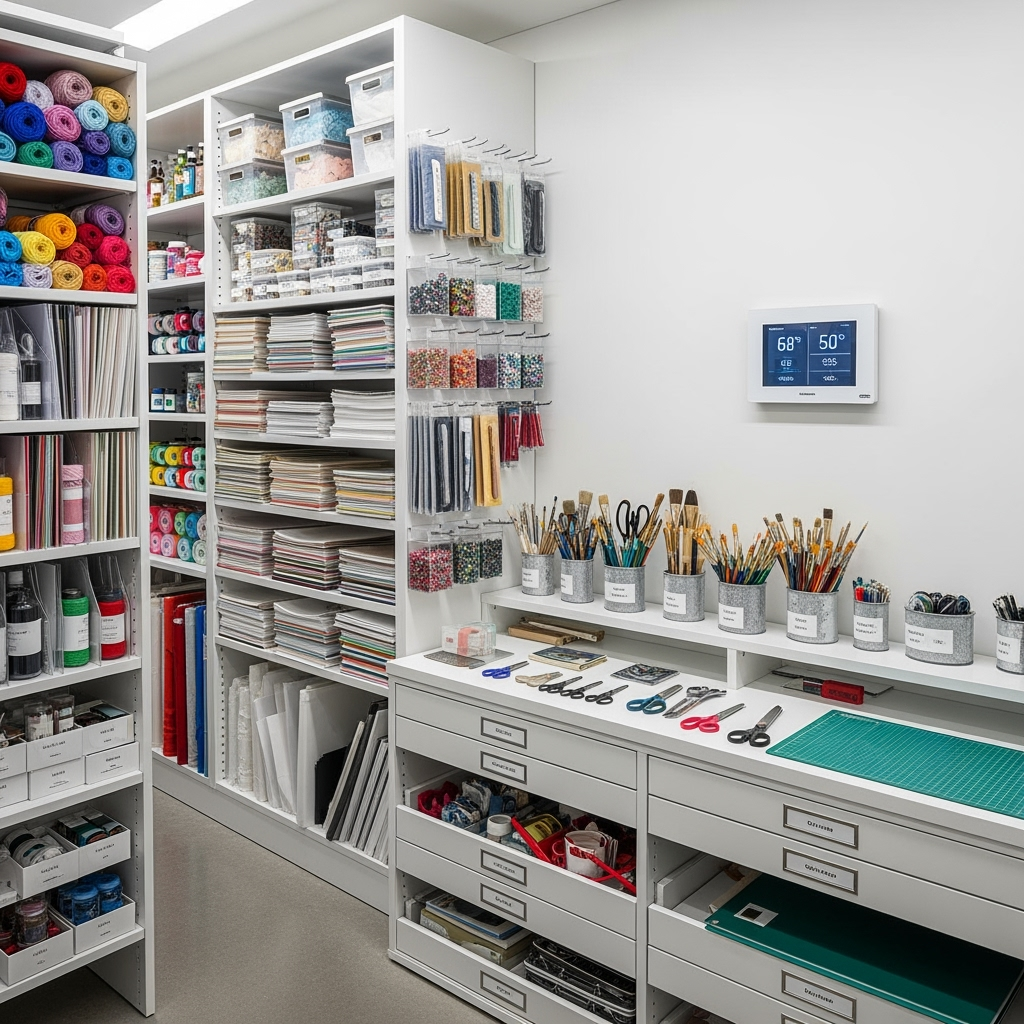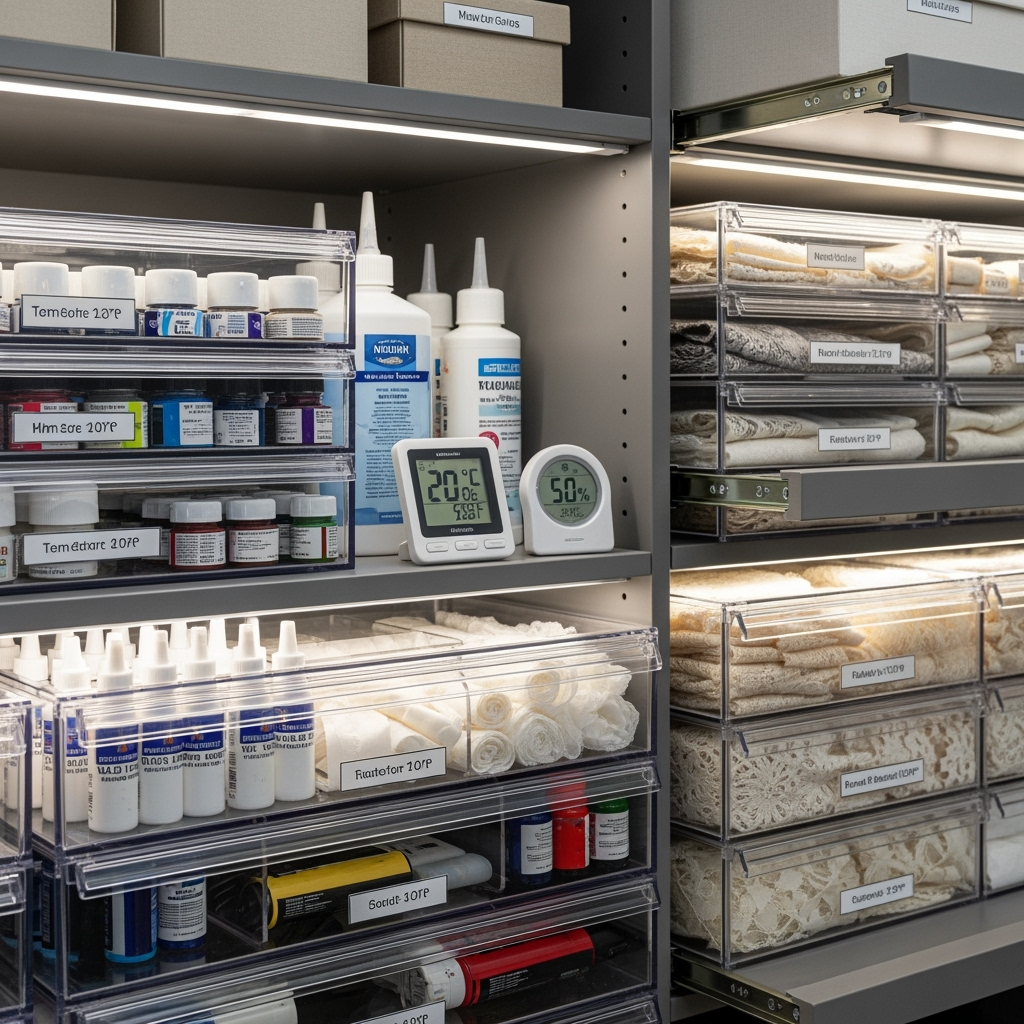Understanding Temperature Sensitivity in Craft Supplies
For craft entrepreneurs and creative professionals, protecting your investment in supplies is crucial for business success. Many craft materials are surprisingly temperature-sensitive, making proper storage essential for maintaining quality and extending shelf life.

Which Craft Supplies Need Climate Control?
Different materials require different storage conditions. Here’s what you need to know about common temperature-sensitive craft supplies:
- Paints and Adhesives: Store between 65-75°F to prevent separation and maintain consistency
- Fabric and Textiles: Keep at moderate temperatures with 45-50% humidity to prevent mold growth
- Paper Products: Maintain consistent temperature to avoid warping and yellowing
- Polymer Clays: Store in cool environments to prevent premature curing
- Rubber Stamps: Protect from extreme temperatures to prevent warping and degradation
Setting Up Your Climate-Controlled Storage Space
Creating the ideal storage environment for your craft supplies involves more than just temperature control. Consider these essential factors:

Best Practices for Craft Supply Storage
Follow these guidelines to maximize the benefits of your climate-controlled storage:
- Monitor temperature fluctuations regularly
- Use airtight containers for sensitive items
- Implement a rotation system for dated materials
- Keep an inventory management system
- Store items off the ground on shelving units
Signs of Improper Storage Conditions
Watch for these warning signs that your storage conditions need adjustment:
- Discoloration of materials
- Changes in texture or consistency
- Unusual odors
- Warping or distortion
- Mold or mildew growth
Seasonal Considerations for Craft Supply Storage
Different seasons present unique challenges for craft supply storage. Plan ahead with these seasonal tips:
- Summer: Increase cooling to prevent heat damage
- Winter: Maintain consistent temperature to avoid freezing
- Spring/Fall: Monitor humidity levels during weather changes
Long-Term Storage Solutions
For materials you don’t use frequently, consider these long-term storage strategies:
- Choose appropriate container materials
- Label everything clearly with storage requirements
- Create a map of your storage unit layout
- Schedule regular maintenance checks
Investment Protection Tips
Protect your craft supply investment with these additional measures:
- Document inventory with photos
- Keep receipts for valuable materials
- Consider insurance for high-value supplies
- Maintain emergency contact information
Creating an Emergency Response Plan
Be prepared for potential storage emergencies:
- Keep a backup power source available
- Have a temperature monitoring system
- Maintain emergency supply kit
- Know who to contact for immediate assistance
Conclusion
Proper temperature control for your craft supplies isn’t just about preservation—it’s about protecting your business investment and ensuring the quality of your creative work. With the right storage solutions and monitoring practices, you can maintain your materials in optimal condition year-round.










Leave a Reply